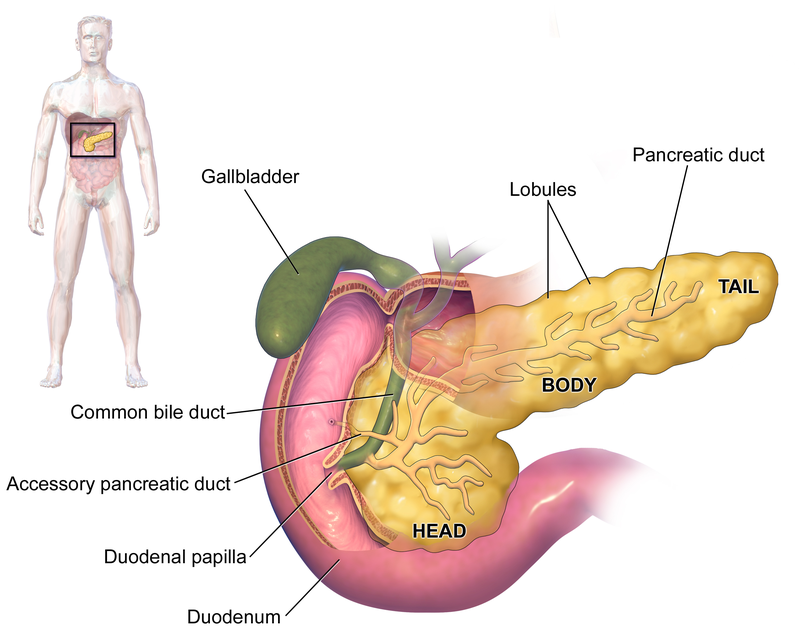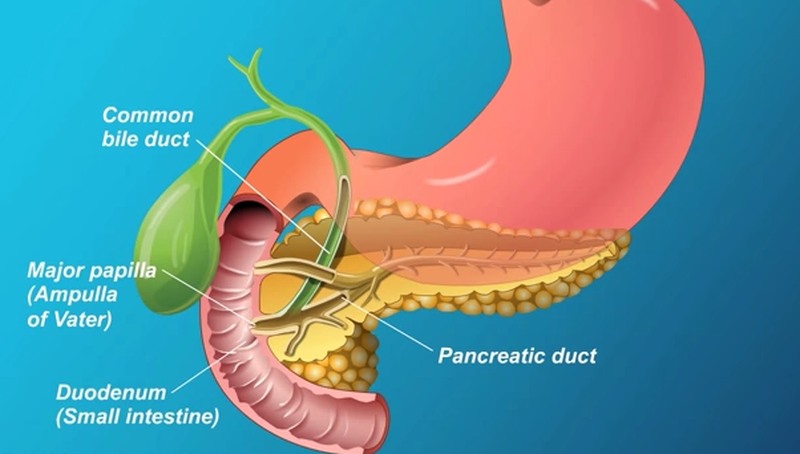The pancreas, an often overlooked organ, produces a plethora of hormones essential to the body. This glandular organ plays an essential role in the process of digestion. The pancreas anatomy consists of a J-shaped, 12-15cm long soft organ sits behind the stomach, across the back of the abdomen. The organ received its name from the Greek meaning “all flesh”.

Pancreas Anatomy: Parts and Functions
The anatomy of the pancreas is divided into three sections: the top, middle, and bottom, known as the head, body, and tail respectively. The head, uppermost region of the pancreas, rests near the duodenum and lay near the mesenteric artery and vein; and the bottom ends near the spleen.
Pancreas anatomy shows that it serves several roles: one hormonal (endocrine) and one digestive (exocrine). It has two ducts, the main pancreatic duct, and an accessory one. These two ducts drain enzymes through the ampulla of Vater into the duodenum.
The pancreas serves a vital role in the endocrine system, which secretes insulin and glucagon into the bloodstream. These help to control blood sugar levels. Pancreas digestive function is reached through enzymes like Amylase, Protease and Lipase. These enzymes help break down carbohydrates, fats, and acids, and play a vital role in neutralizing stomach acid.
Watch the informative video about the role and the anatomy of the Pancreas very clearly:
Where Is the Pancreas Located?
In order to visualize the position of the pancreas, hold right thumb and right pinkie together, while keeping the other fingers straight. Then place this parallel on your stomach in center of the belly, directly below the lower ribs and pointing left. Your hand should be in the approximate location of the pancreas at that point.
Things That Can Go Wrong with Pancreas
Just as with any organ, there are several things that can go wrong. The pancreas is no different; however, because of its digestive and hormonal functions, it can lead to major health issues when it malfunctions. Remember, the anatomy of pancreas, and the enzymes it produces: insulin and glucogen.
When the Pancreas fails, it results in diabetes (type 1—where the body attacks and destroys the pancreas’ cells that produce insulin; and type 2—where the pancreas can no longer produce or release insulin); cystic fibrosis which mainly affects the Pancreas and the lungs; pancreatic cancer, a cancer that usually occurs among the cells that line the pancreatic ducts; pancreatitis, the inflammation and damaged by its own digestive substances; pancreatic pseudocyst, where a fluid-filled cavity occurs after pancreatitis; Islet cell tumor, where the hormone producing cells multiply abnormally, creating a tumor; and an enlarged pancreas, or a larger than normal pancreas.
- 1.
- 2.


View All Comments /Add Comment